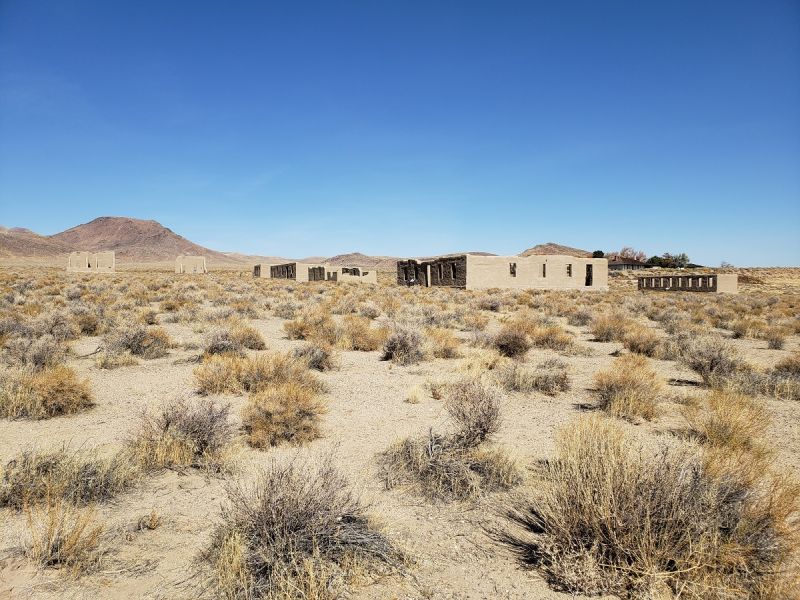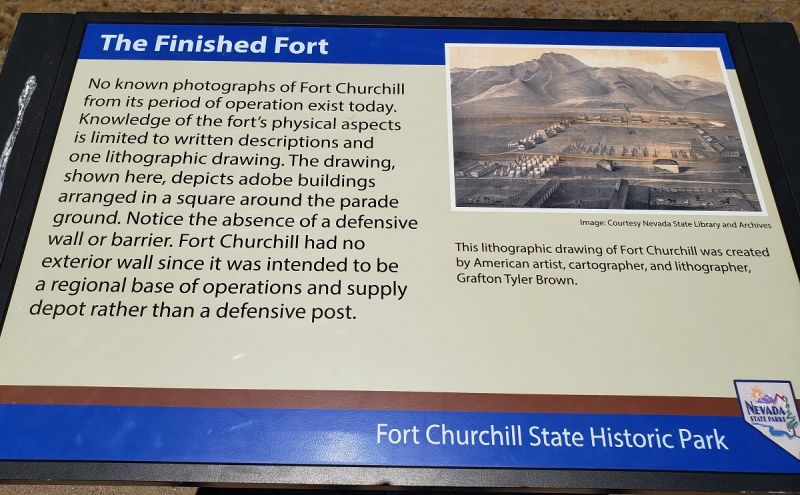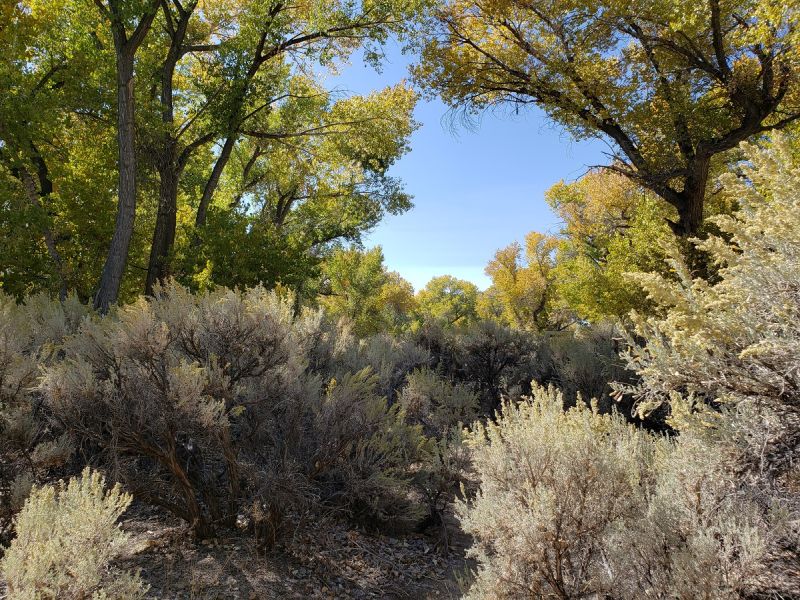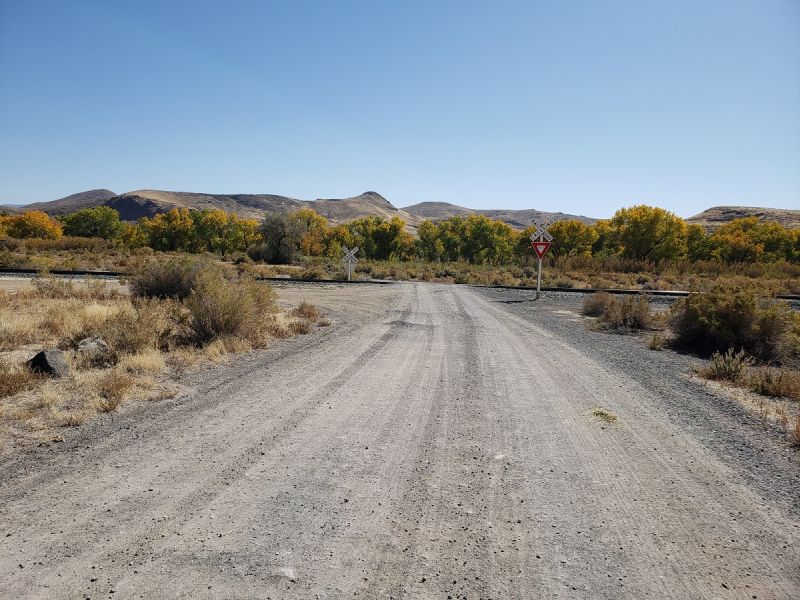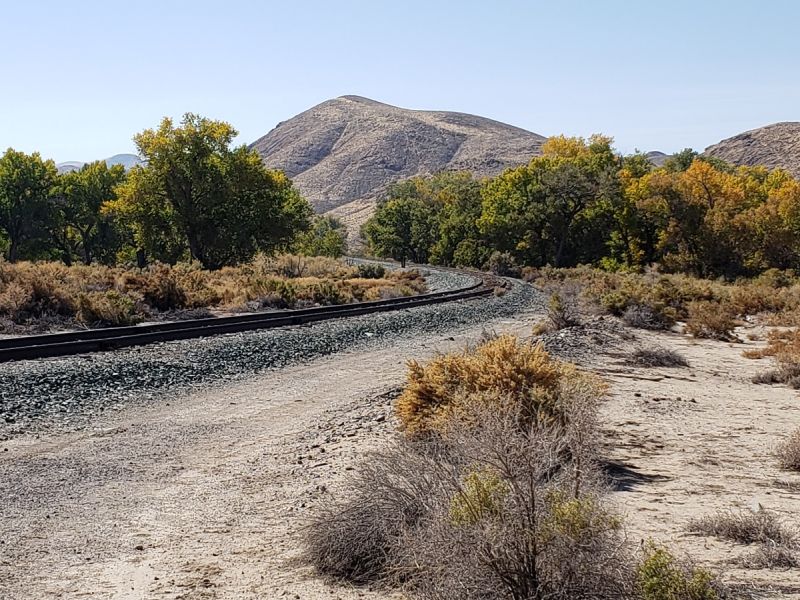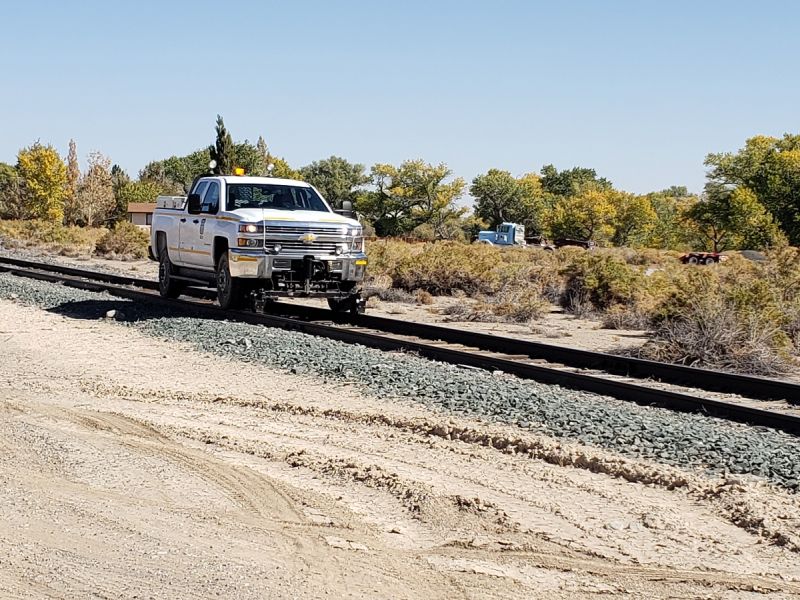This is day 8 of my 15-day CA/NV annual trip. Though this afternoon was mainly spent doing laundry, and after just dining at the casino restaurant and feeling like the python who’s eaten his monthly pig, a whole lot happened earlier that I’d like to share with my buddies here.
I went to NV State RR Museum (NSRM) this morning and enjoyed their recently-produced display relating to the Promontory sesquicentennial. They have the Inyo and Dayton opposing one another. Both have “acted” in Prom recreations, with Dayton (having been built by CP and near that time) being well suited for CP 119.
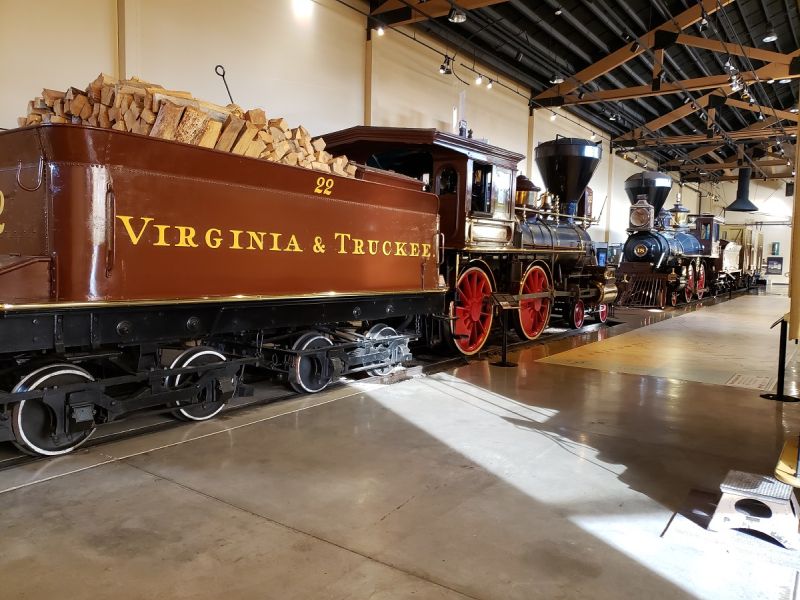
However, V&T coach 19 was actually at the original Prom, because it was an important CP coach at that time. My understanding is that this is the only surviving piece of rolling railroad equipment from Promontory in 1869. Lots of work to do on it, but it’s at least undergoing extensive stabilizing (I’ve heard the term “arrested decay”) measures. Checked out the stuffed woodpecker, some relative of which made all those holes to stuff acorns into. Also notice the huge map on the floor, where you walk the CP/UP transcon line.
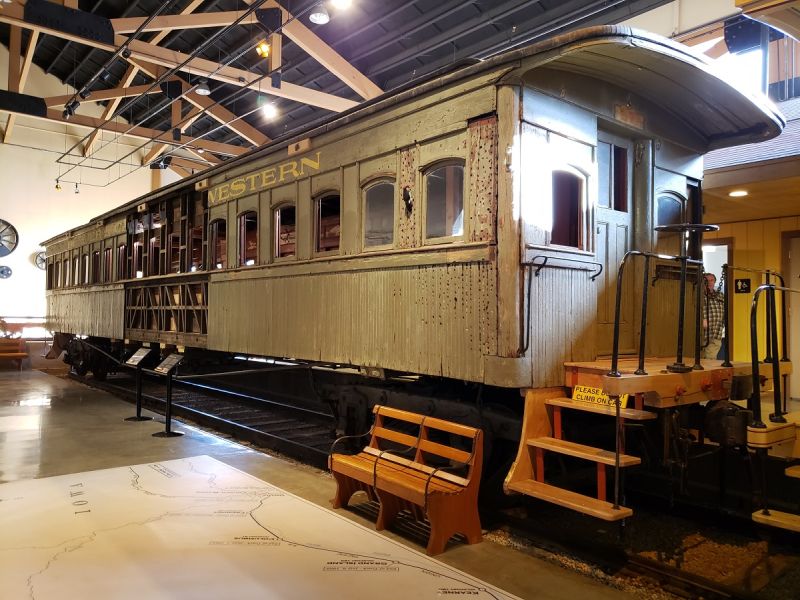
Another CP-built piece from around the era is this outside-framed box car, which is so cool. The two doors on either side allow the opening to be either fully closed, ventilated, or fully open. The end doors can be half-opened for more ventilation, all while ensuring that any critter is retained. I really want to build a model of this some day.
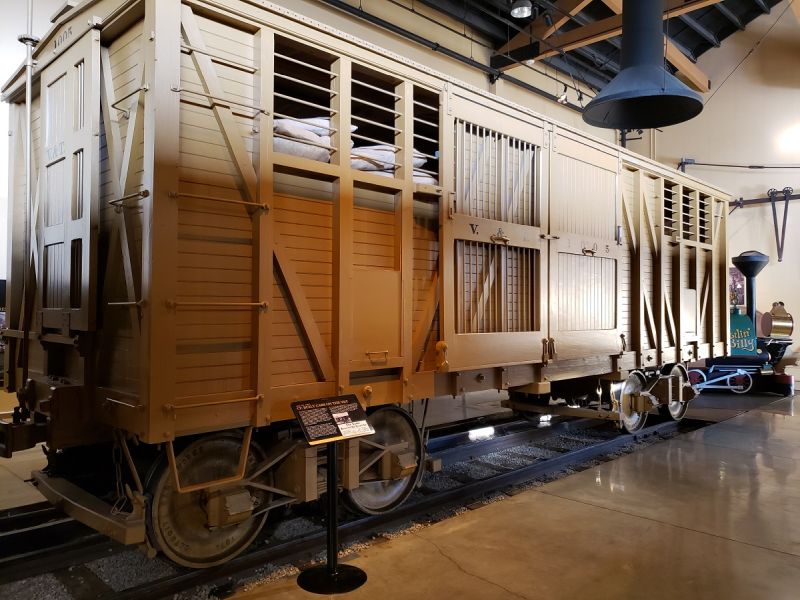
Final piece on special display is a typical rail-delivery car. This is a recreation based on real V&T hardware and a rebuilt frame, and was the style used for the CP. With the rails being laid at up to 10 miles a day, I wondered how they got the empty delivery cars out of the way. But as I read a few months ago, the answer was simple: a crew just picked the car up and carried it back to the end of the delivery car chain.
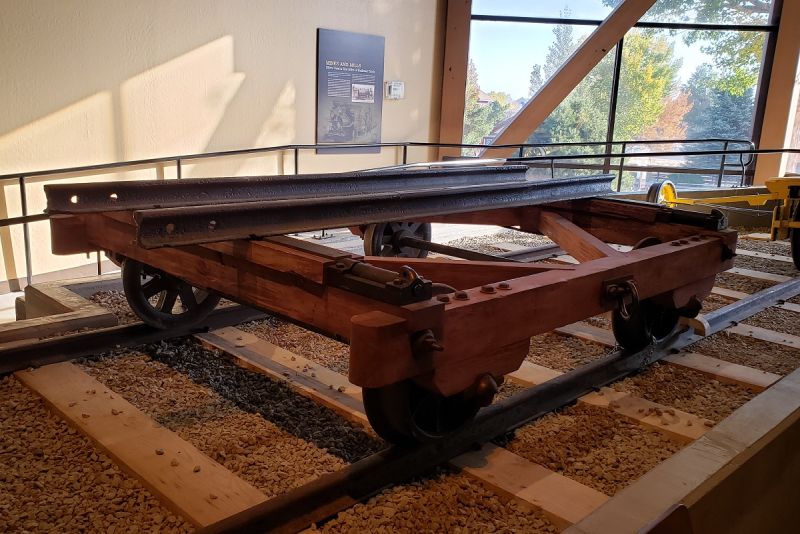
My next objective was to inquire about maps of Mound House trackage (and surroundings) that are earlier than 1916. I know, very obscure topic, but it has to do with my next big model project. Can’t go into it right now, but I will soon. So I went to the curator’s office, the curator being Wendell Huffman, great guy and immensely knowledgeable, who is a co-member in the V&T society. He took the time to root through records and maps, an let me photograph what he found. Not quite early enough, but the chase is on, and several people are now involved. Anyway, here’s a pic of one of the enormous blueprints he unrolled or unfolded. This “station map” is from the SP, who took over the C&C which retained an interchange with the V&T at Mound House. Most of the vertical trackage is V&T. Notice the buildings at bottom left made of one or more “car bodies.”
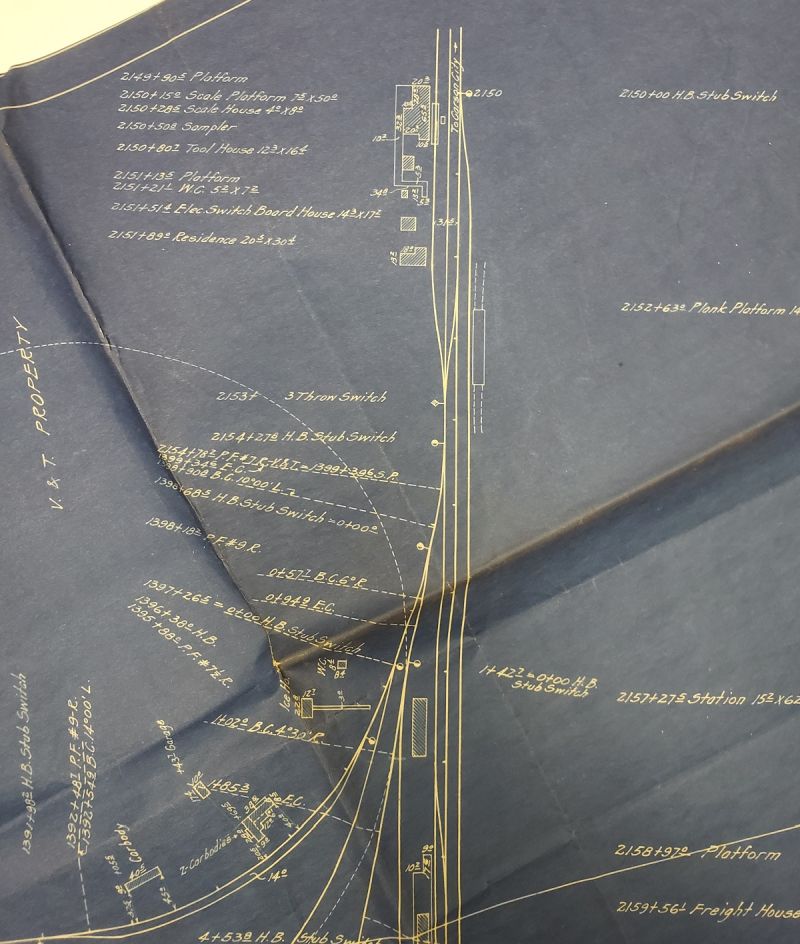
My next objective was to hopefully learn about the reconstruction of the V&T locomotive transfer car. This was a super heavy duty (for its day) flat car, and Wendell gave a big talk about it at the conference. Here’s Wendell, next to some of its truck parts.
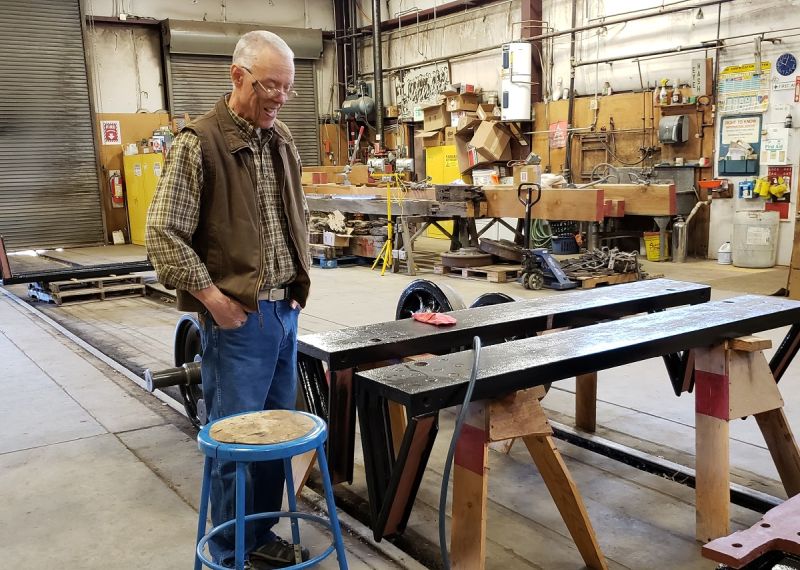
The trucks and bolsters are especially complicated, in that they were designed to handle a far heavier load than usual. They’re completely taken apart here, each piece undergoing repair & painting. I’d like to share photos of these parts with you, and (unless I mention otherwise) they are for just one truck. I’m going to be using my limited vocabulary, so bear with me. BTW, a new LSC member, David, was interested in this particular car, and I hope these photos will be helpful.
Here’s the wheels & axles.
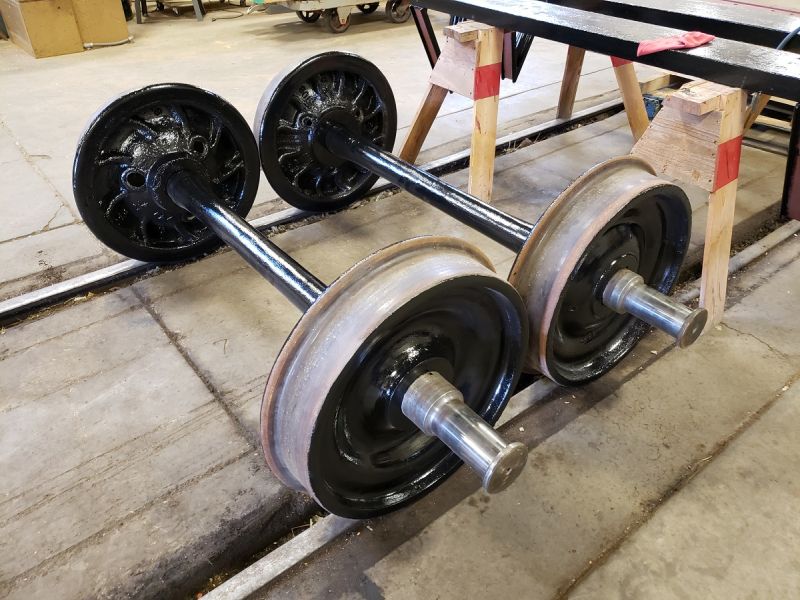
Next, the main truck beams. They install 90 degrees from what you see (the upper flat surfaces will be vertical). Please don’t ask me how these go together…
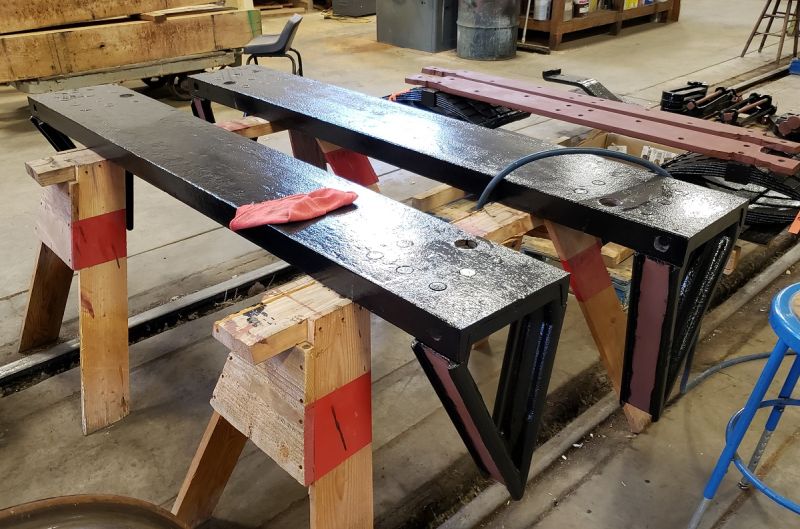
These are swing motion trucks, with the springs seen below. The beams atop them are involved in that parallelogram somehow (they’ll mount vertically).
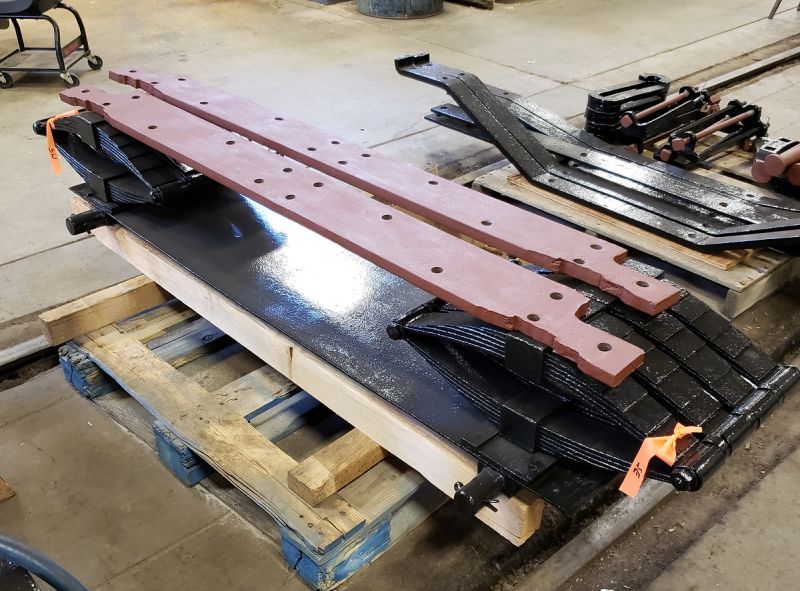
Again, those parts are for just one truck. Here are more parts for the same truck, with the suspension links at the upper left. The thick pins are the main pivot axles for the swing motion. I don’t know how the flat iron braces go on, but I believe they compose the side frames of the truck.
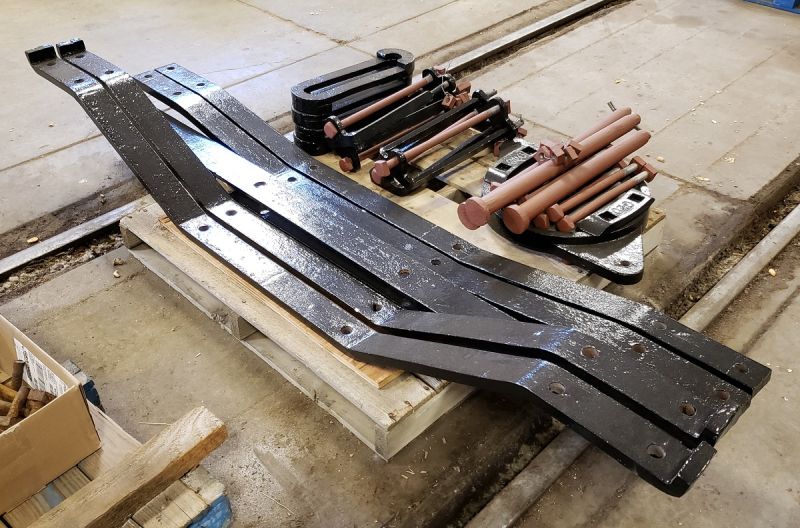
These are the journals for the whole car; 1 set of 4 is for the truck I’m describing. If I’m not mistaken, these bolt to the side frame flat bars above.
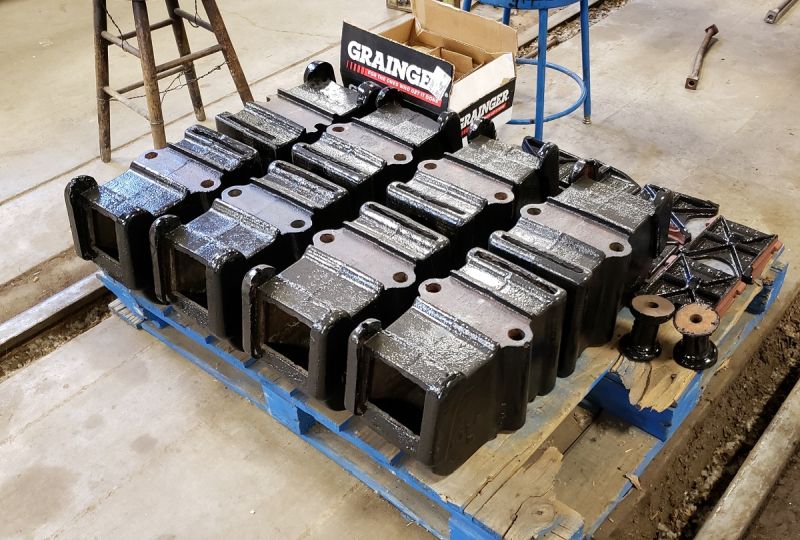
Here’s the body bolster. It’s huge! And it’s basically 2 normal iron body bolsters (composed of upper and lower forged bars and cast thimbles between) and a thick plate between them that supports the king pin / bearing. Behind it is the other body bolster, upside-down.
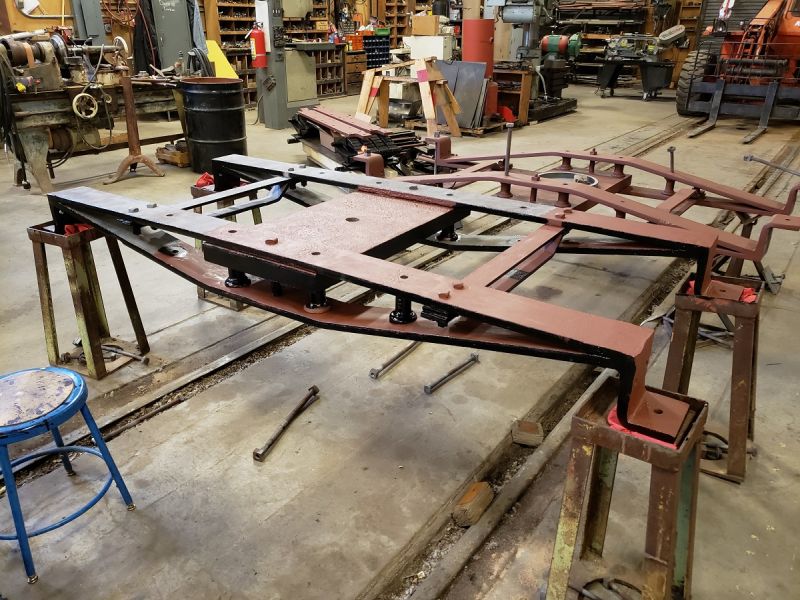
The body sills and other beams are being completed, and the original pieces are laid next to them as reference. In the foreground are all the other fittings, now sandblasted and ready for painting. As you can see, the museum doesn’t have huge facilities!
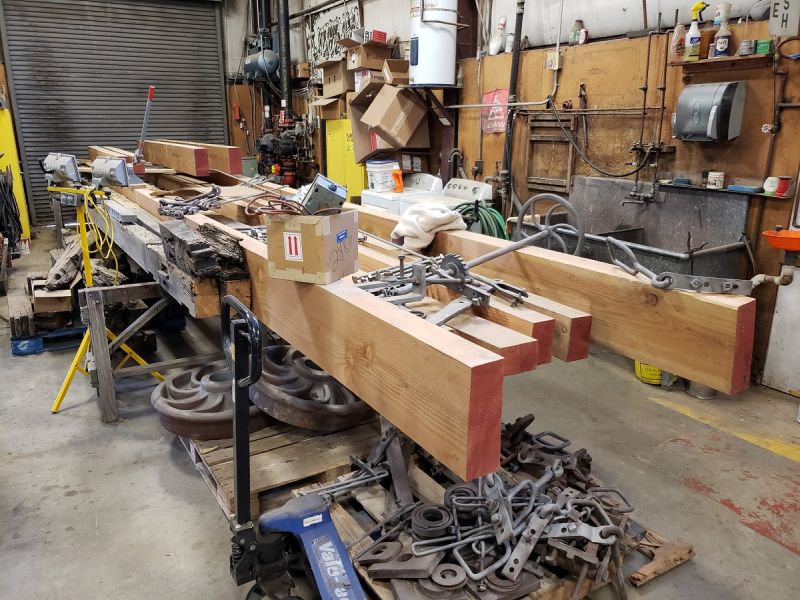
My final objective was to photograph hardware details of V&T flat cars. The museum has a string of decrepit flats that generally have hardware that is more visible than usual.
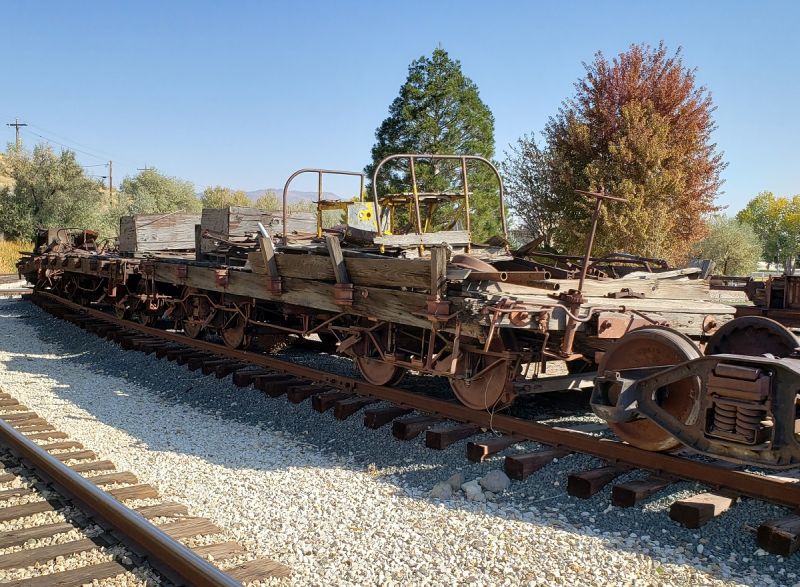
So, for future reference, I took a bunch of shots like this:
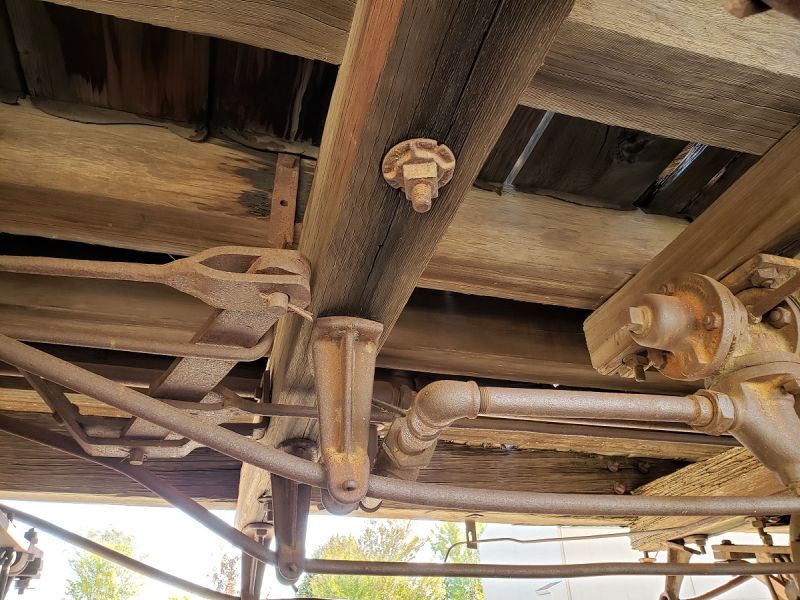
Then I noticed something about a truck. Because of its linkage, I was able to put together what was I was told earlier about swing motion trucks. At the hotel restaurant a couple nights ago, one former and one current museum curator tried to get it into my head how the swing motion truck worked. That discussion started with talk about my derrick model, and my statement that its springs were removed and blocked. One of the gentlemen said, “Well, it might have been a swing motion truck.” But honestly, none of that stuck in my head. However, when I noticed the links on this truck this morning, I began to get what they described. The bottom ends of the links are visible just above the rail.
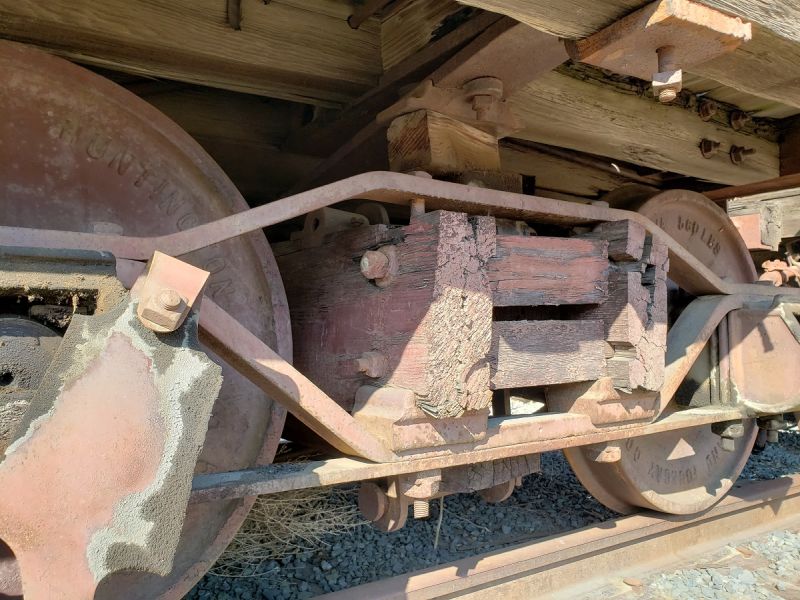
So I now understand that my derrick trucks might seriously suck. (But the old photos aren’t clear enough to prove it had swing trucks yet – until a pro examines them – so I hope he doesn’t, haha!) Regardless, I was excited to finally see how this worked. But instead of doing a bunch more vague pics, I tried my hand at a video-explanation, and here it is, goofups and all! ![]()
After all that, I went to the Rock Point Mill in nearby Dayton, very cool. Comstock-era ruins of a mill having 8 5-stamp groups.
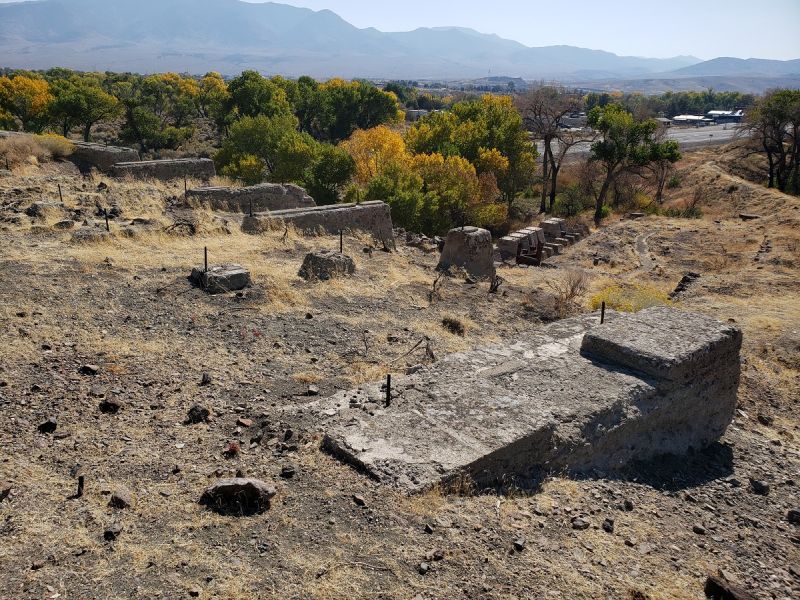
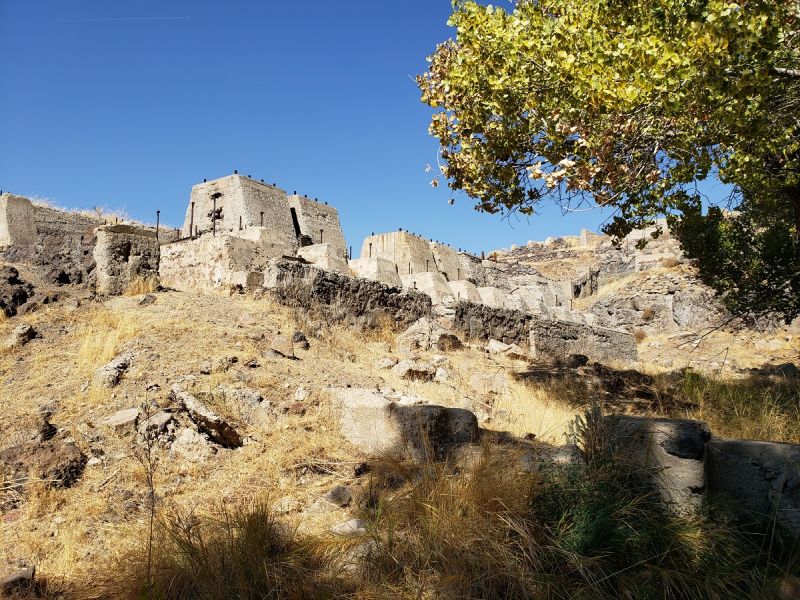
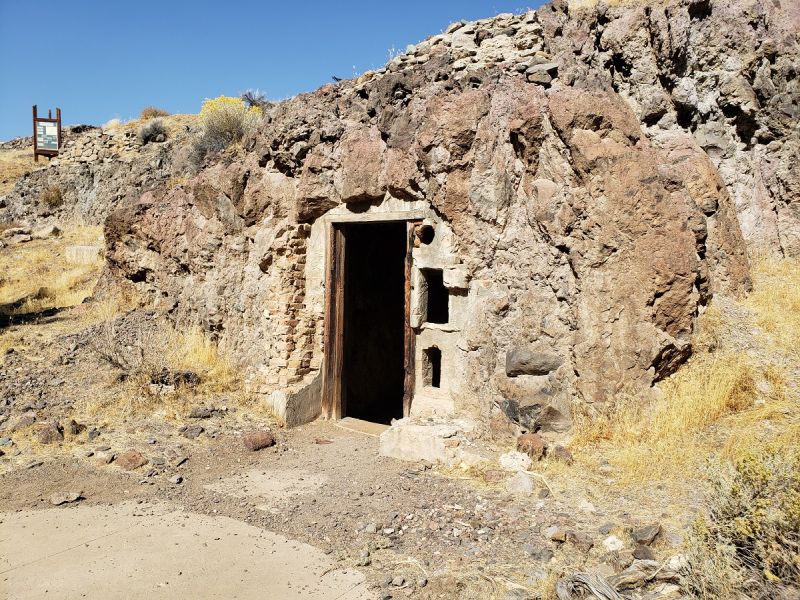
On the way back to a hotel I stopped at an antique/junk store, and a “gold scale” caught my eye. The shop owner said that though it was hand made (I had expressed some suspicion), it had been there from the original shop owner’s stock, and was certainly not a repro. He came down from $125 to $85 without asking. So though it might well be a repro, it looks real, and I’m happy with the price either way. (Well, especially if it were real, haha!)

While doing laundry back at the hotel, I checked out my winnings at the conference’s silent auction. Being a V&T ephemera collector, I was happy to snag a V&T payroll record (based on loco number) from 1878 and a Carson City station map from 1916. I think I got those for $45 and $35.
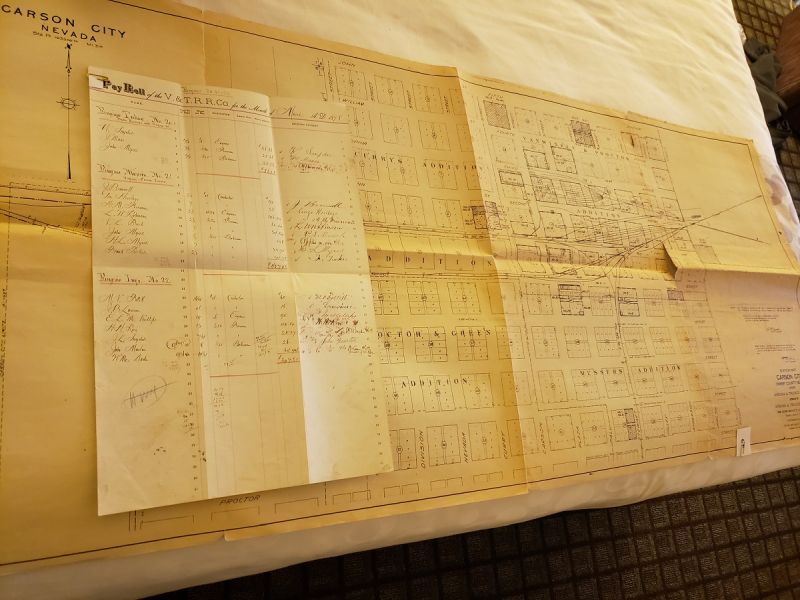
But my favorite was the “mystery gift basket.” The donor was late to show up and put it down, and I’m afraid I was one of the few to notice what was in it. So I put down $20, but no one else covered. And I didn’t really know what was in it until it was explained to me by the donor.
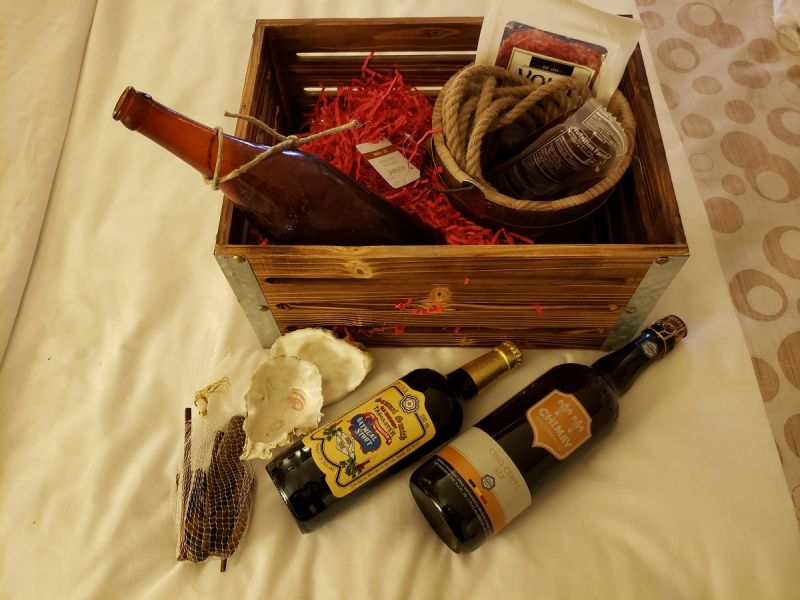
Going clockwise: A neat wood crate; a (new) wooden pail with 2 kinds of sausage and a coil of rope; two huge bottles of beer I’ve never heard of (I’m test driving one of them now), a pair of oyster shells, a bag of square nails and a bottle – the latter three all dug up from the Sutro site we visited yesterday! (The donor helps run that operation, so all legit and provenanced). Now, I call that a man’s gift basket, woo hoo!
OK, done for the day. Thanks for viewing my meandering travelogue,
===>Cliffy
